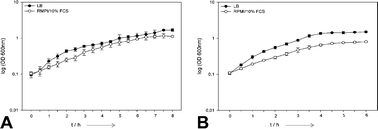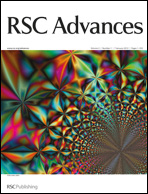Silver is commonly used both in ionic form and in nanoparticulate form as a bactericidal agent. This is generally ascribed to a higher toxicity towards prokaryotic cells than towards mammalian cells. Comparative studies with both silver ions (such as silver acetate) and polyvinylpyrrolidone (PVP)-stabilized silver nanoparticles (70 nm) showed that the toxic effect of silver occurs in a similar concentration range for Escherichia coli, Staphylococcus aureus, human mesenchymal stem cells (hMSCs), and peripheral blood mononuclear cells (PBMCs), i.e. 0.5 to 5 ppm for silver ions and 12.5 to 50 ppm for silver nanoparticles. For a better comparison, bacteria were cultivated both in Lysogeny broth medium (LB) and in Roswell Park Memorial Institute medium (RPMI)/10% fetal calf serum (FCS) medium, as the state of silver ions and silver nanoparticles may be different due to the presence of salts, and biomolecules like proteins. The effective toxic concentration of silver towards bacteria and human cells is almost the same.

You have access to this article
 Please wait while we load your content...
Something went wrong. Try again?
Please wait while we load your content...
Something went wrong. Try again?


 Please wait while we load your content...
Please wait while we load your content...